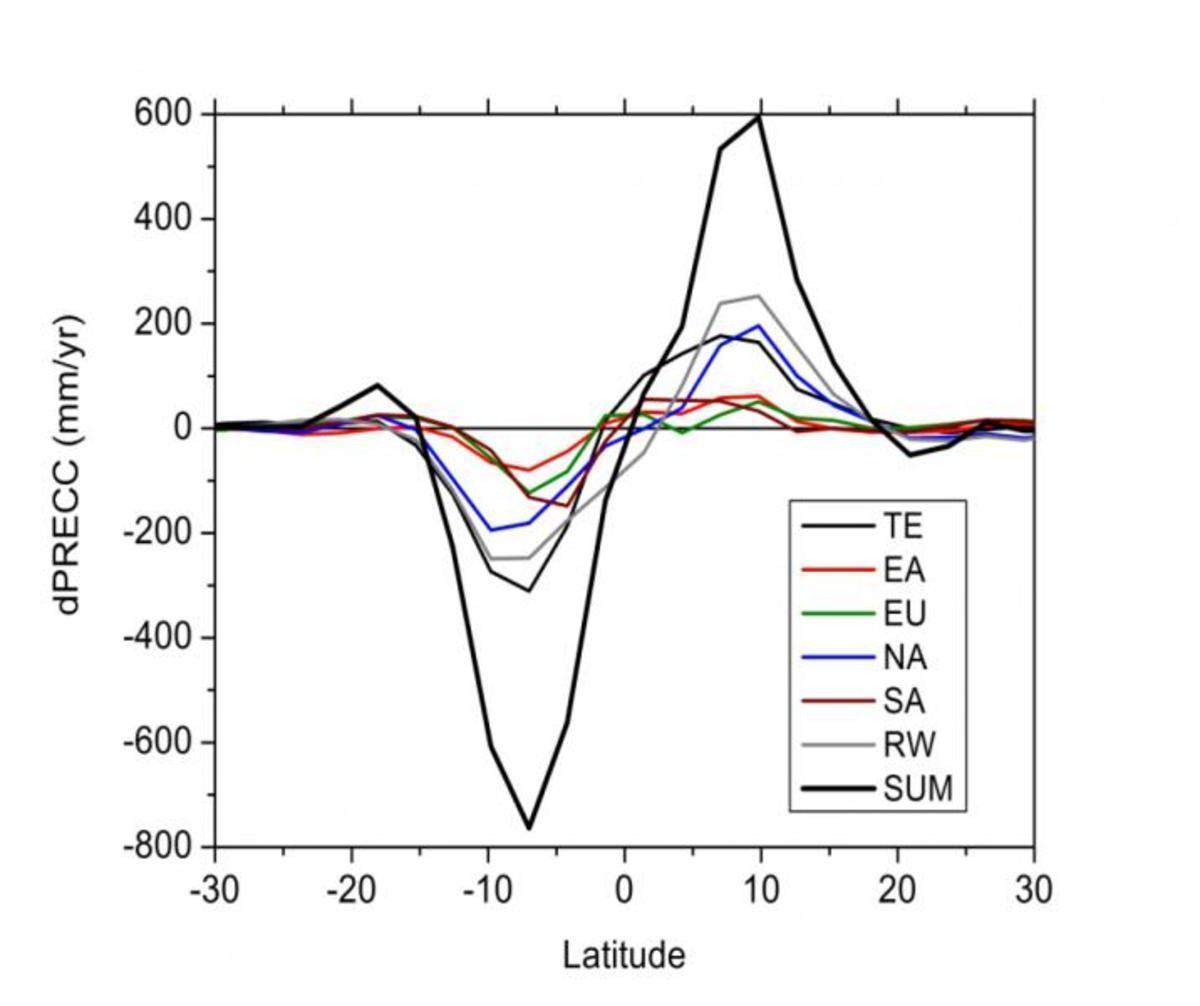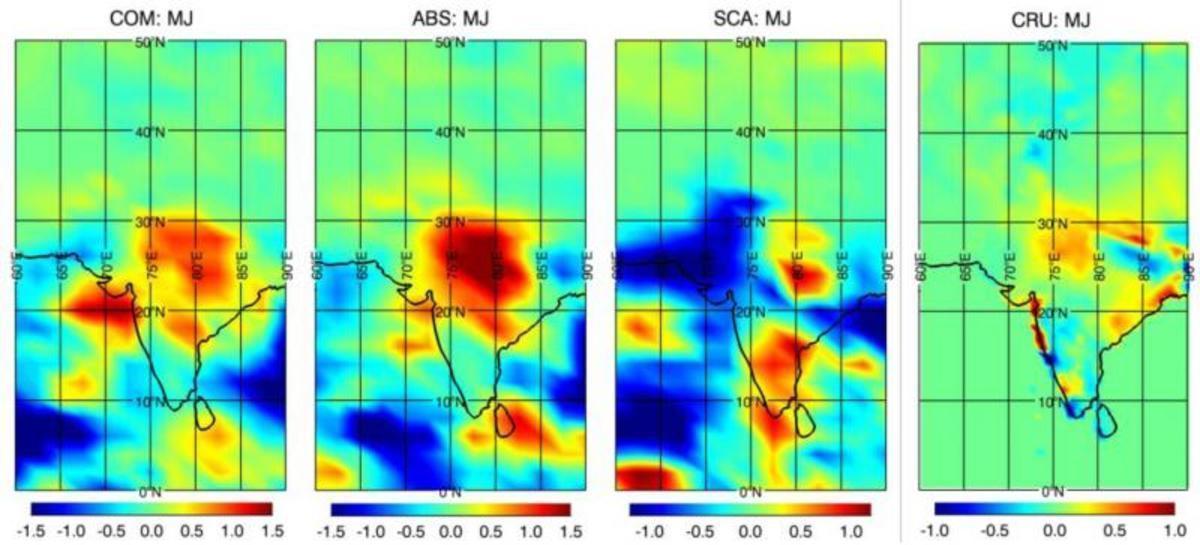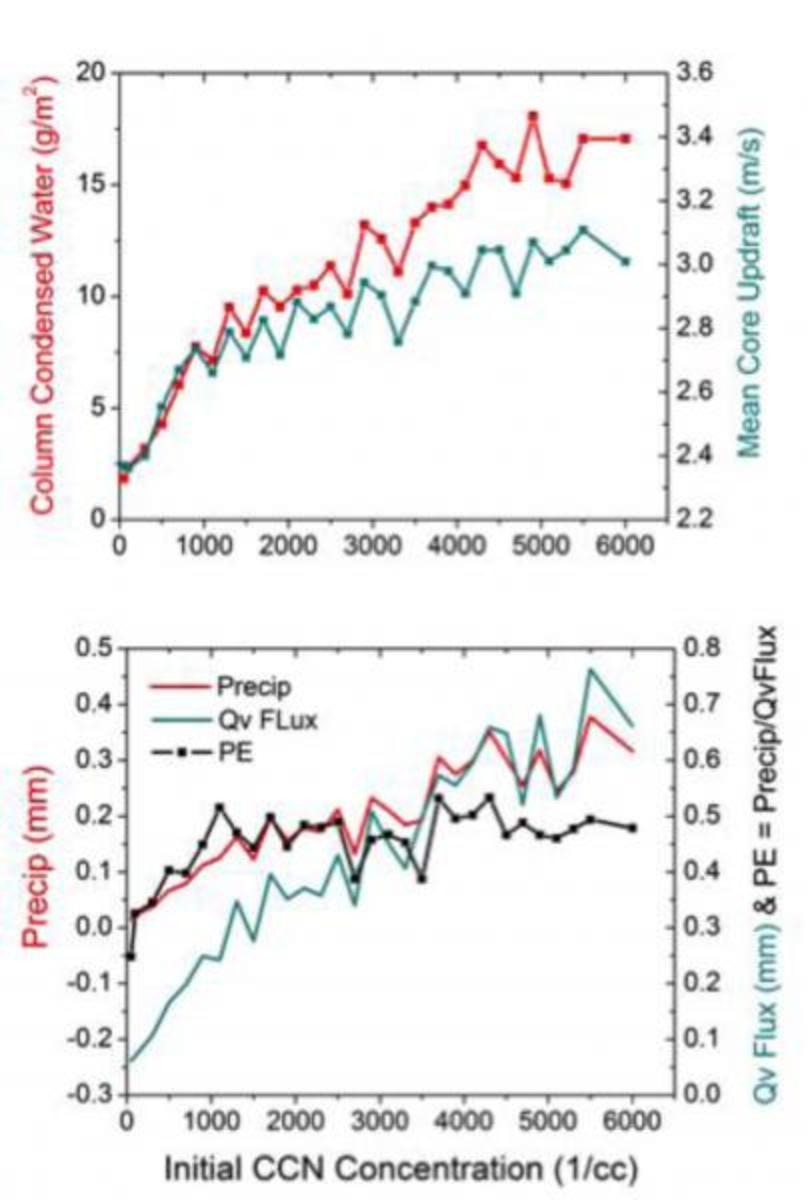Chien Wang's Group
Chien Wang's group works on various issues related to atmospheric aerosols, clouds, and tropospheric chemistry, and studies the climate impacts of aerosols and anthropogenic pollutants.
CLIMATE EFFECTS OF ANTHROPOGENIC AEROSOLS:
Human activities have increased tropospheric aerosol abundance through emissions of particulate matter (primary production) or precursors leading to the formation of aerosols (secondary production). The climate effect of these anthropogenic aerosols remains one of the most uncertain factors in current predictions of future climate. We use interactive aerosol-climate models and various observational data to study this effect. Our research effort is specifically aimed towards achieving a better understanding of the climate response to anthropogenic absorbing aerosols (mainly black carbon aerosols). Using our model and observational data, we have found that absorbing aerosols can significantly affect the distribution and strength of tropical precipitation systems, including the Pacific ITCZ and the Indian monsoon.


Selected publications:
Wang, C., 2004, J. Geophys. Res., 109, D03106.
Wang, C. 2007, Geophys. Res. Lett., 34, L05709.
Kim, D., C. Wang, A.M.L. Ekman, M. C. Barth, and P. Rasch, 2008, J. Geophys. Res., 113, D16309.
Wang, C., 2009, Ann. Geophys, 27, 3705-3711.
Wang, C., G.-R. Jeong, and N. Mahowald, 2009, Atmos. Chem. Phys., 9, 3935–3945.
Wang, C., D. Kim, A. M. L. Ekman, M. C. Barth, and P. Rasch, 2009, Geophys. Res. Lett., 36, L21704.
Jeong, G.-R. and C. Wang, 2010, Atmos. Chem. Phys., 10, 8373-8389.
AEROSOL-CLOUD-PRECIPITATION INTERACTION:
Aerosols are the primary catalyst for liquid and ice cloud particle formation in the atmosphere. Changes in aerosol properties are thus expected to affect clouds and precipitation. Current global models still cannot explicitly resolve certain critical processes involving aerosol-cloud interaction and the influence of such interactions on precipitation. We develop and use a three-dimensional cloud-resolving model coupled with the size- and mixing-dependent aerosol module to study the detailed aerosol-cloud interaction and its impacts on precipitation and radiation. Some of these results have been incorporated in our global scale modeling efforts to improve the aerosol-climate model or to assist data analyses.


Selected publications:
Ekman, A., C. Wang, J. Ström, and J. Wilson, 2004, Atmos. Chem. Phys., 4, 773-791.
Wang, C., 2005, J. Geophys. Res., 110, D21211 and D22204.
Ekman, A., C. Wang, J. Ström, and R. Krejci, 2006, J. Atmos. Sci., 63, 682-696.
Ekman, A. M. L., A. Engström, C. Wang, 2007, Q. J. Roy. Meteor. Soc., 133B, 1439-1452.
AFFILIATED WITH:
JOINT PROGRAM ON THE SCIENCE AND POLICY OF GLOBAL CHANGE